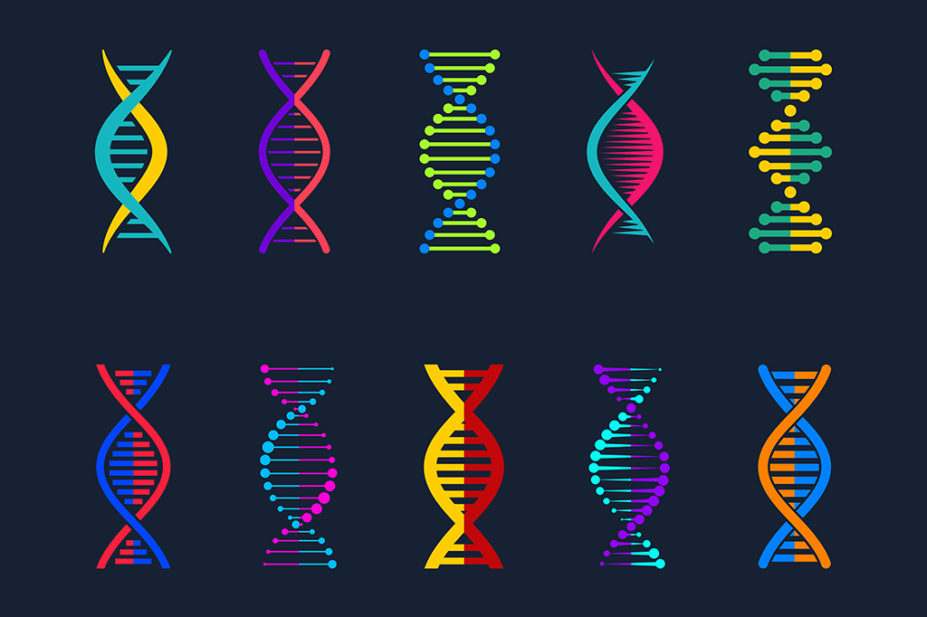
Shutterstock.com
Not only is the biology of pain incredibly complex, but pain intensity can be altered by social and psychological factors, such as anxiety and stress levels, living conditions, or even cultural attitudes towards pain. The unique combination of these factors gives rise to inter-individual differences in pain perception and variable analgesic response[1,2].
“We tend to look at the individual patient — you do need to be aware of any underlying pathology,” says Emma Davies, advanced pharmacist practitioner in pain management at Cwm Taf Morgannwg University Health Board in Wales. However, she says the problem with a chronic condition “is the interplay of lots of other non-pathological factors”.
“For any individual, a different part of the biopyschosocial triplet could be impacting them at any given time.”
This makes pain a moving target for pharmaceutical interventions. But instructions for fine-tuning treatment could be found in the genetics behind these differences.
The NHS has set out an ambitious aim to embed genomic medicine solidly into UK healthcare over the next five years[3]. Within this, pharmacogenomic prescribing is tipped to reduce adverse drug reactions, which cost the NHS an estimated £2.21 bn annually[4], and help get more bang for the more than £20bn spent on prescription medicines each year, by selecting the right drug and dose for patients from the offset[5,6].
For patients with pain, this could mean less trial-and-error cycling through different medicines to find the one that works for them — which is particularly problematic in chronic pain, where no two patients are alike.
Pharmacokinetic variants
Pharmacogenomic tests can look for genetic variants that are associated with a variable response to specific medicines, either by affecting how the body metabolises these medicines — pharmacokinetic variants, or how it responds to them — pharmacodynamic variants.
The data around pharmacokinetic genes are well ahead of any data around pharmacodynamic genes for analgesic response
Max Smith, clinical pharmacogenomics specialist at MedStar Health, headquartered in Columbia, Maryland
“The data around pharmacokinetic genes are well ahead of any [data around] pharmacodynamic genes for analgesic response,” says Max Smith, clinical pharmacogenomics specialist at MedStar Health, headquartered in Columbia, Maryland. With an established body of knowledge for analgesic pharmacokinetics and reduced reliance on self-reported pain outcomes through supplementary use of serum concentrations and metabolites, the evidence base is robust enough for practical use.
“Really, when we say pharmacogenomics in pain, for clinical use today, we’re talking about codeine and tramadol with CYP2D6,” Smith adds. These opioids are predominantly metabolised by the CYP2D6 isoenzyme of the cytochrome P450 family, a class of enzymes that has high levels of genetic variation. The combination of different genetic variants that each person’s CYP2D6 gene holds alters the enzyme’s activity levels, into categories from a ‘poor metaboliser’ (PM) to an ‘ultrarapid metaboliser’ (UM)[7,8].
Because codeine and tramadol are pro-drugs, reduced metabolism means that not enough of the active metabolite responsible for the analgesic effect is produced, leading to opioid failure. However, the level of CYP2D6 over-activity seen in UMs increases the risk of side effects owing to toxic metabolite accumulation — a main thrust of pharmacogenomic research.
The Clinical Pharmacogenetics Implementation Consortium (CPIC) and Dutch Pharmacogenetics Working Group (DPWG) have given testing for these opioids the stamp of approval; both recommend codeine and tramadol be avoided in UM and PM cases[9][10]. The CPIC rates the evidence of benefit for genetic screening here as ‘strong, although the DPWG ranks the evidence for codeine as ‘beneficial’ and tramadol as ‘possibly beneficial’[11][12]. Although codeine is contraindicated in UMs in the UK, there is not yet a routine genetic testing service to identify these patients before prescribing in the NHS[13].
But while opioids are the headline act of pharmacogenomics in pain, other analgesic drug classes are beginning to enter the spotlight.
Non-steroidal anti-inflammatory drugs (NSAIDs) are mainly metabolised by the CYP2C9 isoenzyme, with similar metaboliser categories to CYP2D6. The CPIC notes that NSAID metabolism is decreased in PMs and some intermediate metabolisers (IM), extending half-lives and increasing plasma concentrations to levels that can trigger the NSAID toxicity profile — gastrointestinal bleeds, renal damage and cardiovascular events. Depending on the baseline length of the NSAID half-life, the CPIC recommends considering alternative drugs or starting with lower doses and titrating upwards with caution, giving these a ‘moderate’ evidence rating[14].
However, the data for NSAIDS are contradictory and “pretty poor”, says Munir Pirmohamed, David Weatherall chair in medicine at the University of Liverpool and the NHS chair of pharmacogenetics. Partly, this comes from differences between NSAIDs’ reliance on CYP2C9 compared with other isoenzymes, but also inconsistencies between studies in terms of high or low doses given, or the presence of contributing factors, such as helicobacter pylori infection.
And there are also surprising intricacies that make even pharmacokinetic genetics difficult to simplify into clinical instructions.
“With a whole cluster approach [on the CYP2C family] for NSAIDS, we found that CYP2C19*17 was more important [for risk of peptic ulceration] from our data, because CYP2C19 is involved in the metabolism of endogenous gastroprotective eicosanoids,” Pirmohamed points out[15].
The CYP2C19*17 variant increased the digestion of gastroprotective substances, which exposed the patient to NSAID gastrointestinal side effects. This shows that not only are larger studies needed, but also a broader genetic focus to colour the whole picture.
Much stronger evidence is coming from the human leukocyte antigen (HLA) gene class, which governs non-dose related adverse drug reactions, by presenting antigens to immune cells to recognise as ‘host’ or ‘foreign’ and trigger an immune reaction[16]. A fruitful area of pharmacogenomics research, with more than 16,000 HLA variants, the severe side effects of some neuropathic pain medicines are in its crosshairs[17].
Testing ‘positive’ for either HLA-B*15:02 or HLA-A*31:01 gene variants gives patients an increased risk of Steven-Johnson syndrome, toxic epidermal necrolysis, drug reaction with eosinophilia and systemic symptoms, or maculopapular exanthema with carbamazepine, oxcarbazepine and phenytoin. Avoidance of these three drugs is recommended by the CPIC in positive cases — and phenytoin additionally has CYP2D6-based recommendations[18].
This evidence base is much more consistent and replicable, and with numbers needed to ‘test’ as good as 47 to prevent one episode of hypersensitivity, this could be another strong candidate for the clinic[19].
Pharmacodynamic variants
The influence of pharmacodynamic variants, however, is not yet clear.
In studies of patients with cancer pain or pain post-caesarean section, analgesic failure from opioids was associated with the presence of mutations in the ORM1 gene encoding for the mu opioid receptor (Mu1)[2]. Further digging showed the main mutation behind this analgesic failure is that the A118G Mu1 gene variant produces fewer copies of Mu1, meaning less are available for drug binding and response. Holding two copies of the mutation (GG genotype), one of each (AG), or two ‘normal’ copies (AA) is thought to create a spectrum of sensitivity to opioid analgesia, suggesting dose-matching opportunities, but also implications for identifying opioid dependency risk.
Similarly, a mutation in the COMT enzyme that breaks down neurotransmitters involved in pain signalling pathways — the A158G variant — may also shed light on analgesic failure. The mutation reduces COMT activity up to four-fold, therefore reducing neurotransmitter removal and extending pain signal firing[2,11]. This can exaggerate pain intensity and contribute to lower pain thresholds — whereas absence of this mutation has higher COMT activity, dampened pain signals and raised pain thresholds[20]. This context for patient-reported pain levels could support more accurate dosing.
However, the evidence behind these pharmacodynamic genetic variants is hampering their clinical implementation.
The studies which have been undertaken have been contradictory
Munir Pirmohamed, David Weatherall chair in medicine at the University of Liverpool and the NHS chair of pharmacogenetics
“The studies which have been undertaken have been contradictory,” explains Pirmohamed, “largely because the study design does not take into account the fact there is often a placebo element with pain relief.”
Because pain levels are open to influence by social and psychological factors, pain could be alleviated by being under clinical care, or perhaps worsened by distrust of the system — so isolating the effect of the drug alone on pain is particularly tricky.
“With small studies that have been undertaken, you can’t really account for this, so I think for pain, we need much larger studies to be able to show if there is a true effect.”
For now, Pirmohamed adds, the jury is out on ORM1 and COMT.
“I don’t think we can say definitively that the opioid receptor is important — but we also can’t say definitively that it is not important. And with COMT as well, much more work needs to be done.”
Both COMT and ORM1 gene variants lack any recommendations from CPIC and the DPWG, owing to the poor evidence base[11].
Into the clinic
So, what would all of this look like in the clinic?
“The stage we’re in now is that there are some pharmacogenomics tests,” says Essra Youssef, a research pharmacist at the University of East Anglia’s School of Pharmacy. “They tend to be for cancer therapies, they tend to be a pre-test that’s needed before you prescribe a specific drug.”
But this approach could run into practical barriers if expanded to more medicines — even just analgesics.
A recent analysis by Youssef determined that 5,780,595 new prescriptions per year in UK community pharmacy alone would warrant a pharmacogenomic prescribing action — analgesics accounting for 2.9 million of these, with 2.7 million for opioids and 143,688 for NSAIDs[21]. Restricting the scope to ‘direct-action’ recommendations, such as switching medicines or changing dose, only reduced this to 418,380 analgesics: 385,638 opioids and 32,742 NSAIDs. Carbamazepine, oxcarbazepine and phenytoin had 2,913, 31,043 and 5,167 direct-action recommendations, respectively.
“Does everyone who goes on codeine need to have a CYP2D6 test done? The answer is probably not, no.”
Munir Pirmohamed, David Weatherall Chair in Medicine at the University of Liverpool and the NHS Chair of Pharmacogenetics
“Does everyone who goes on codeine need to have a CYP2D6 test done?” Pirmohamed questions. “The answer is probably not, no. But what you need to think about is eligibility criteria.”
One way around the numbers is to use a stricter criteria list, such as a history of complex pain relief needs, previous adverse effects, or incorporating prevalences by ethnicity or sex, to identify priority patients.
But Youssef’s research showed that just four genes accounted for 95% of the 5,780,595 prescriptions — three of which were CYP2D6, CYP2C19, and HLA-B.
This supports an approach known as pre-emptive panel testing; testing once for multiple genetic variants to establish an individual’s pharmacogenetic ‘profile’, for use by any prescriber in the future.
One study hoping to demonstrate the benefit of panel testing is the Ubiquitous Pharmacogenomics (U-PGx) consortium’s large-scale, international study, PGx PREPARE, for which Pirmohamed leads the UK arm.
Testing 13 pharmacogenes across primary and specialist care, including for codeine and tramadol, phenytoin, amitriptyline and nortriptyline, the study spans almost 7,000 people, aiming to compare adverse drug reactions between groups. The investigators hypothesise a 30% reduction in clinically relevant drug reactions — and preliminary results suggest that this endpoint was met, with full results due to be published imminently[22,23].
And looking specifically at panel-testing in pain the Pgx-ACT study, a US-based, randomised, controlled trial of around 250 outpatients with chronic pain — of which Smith is principal investigator — comparing pain reduction outcomes from pharmacogenomic prescribing with standard treatment[24]. Based in primary care, the study uses panel testing to embrace the practical complexities of the ‘typical’ pain patient and is due to complete in 2024.
“We’re not just looking at CYP2D6 and we’re not just focused on opioids. We’re also providing recommendations for CYP2C9 and NSAIDs, and other drug-gene pairs that have CPIC guidelines relevant to that patient’s care,” Smith explains. “There’s a lot of opportunity to go beyond pain, and look at comorbidities, to look at things like depression and anxiety, where there are CPIC guidelines for antidepressants. So, we’re providing recommendations for any drug-gene pair that has a CPIC guideline if it’s relevant to the patient.”
Studies like these are building evidence, although there is still a way to go in other areas. Translation into clinical use is under discussion, and infrastructure has gotten off the ground with the creation of NHS genomic centres, although there is work to do to enable secure data storage of private genetic information.
The individual pieces are there. But with high hopes of pharmacogenomics revolutionising NHS care, experts warn the puzzle is not yet complete — not for pain.
“Genomics is still not going to be the absolute answer, because the genomic issues are likely only part of the story — we understand that experience of pain is impacted by past experience, current experience, situation, emotions,” says Davies.
“While it is likely to have an impact on aspects of pain, I suspect it won’t solve all of the problems for all of the people, unfortunately.”
- This article was amended on 10 January 2023 to correct Max Smith’s place of work
- 1Packiasabapathy S, Sadhasivam S. Gender, genetics, and analgesia: understanding the differences in response to pain relief. JPR. 2018;Volume 11:2729–39. doi:10.2147/jpr.s94650
- 2Singh A, Zai C, Mohiuddin AG, et al. The pharmacogenetics of opioid treatment for pain management. J Psychopharmacol. 2020;34:1200–9. doi:10.1177/0269881120944162
- 3Accelerating genomic medicine in the NHS. NHS England. 2022.https://www.england.nhs.uk/long-read/accelerating-genomic-medicine-in-the-nhs/#:~:text=In%202022%2C%20the%20NHS%20is,around%2040%25%20of%20people%20tested (accessed 29 Dec 2022).
- 4Osanlou R, Walker L, Hughes DA, et al. Adverse drug reactions, multimorbidity and polypharmacy: a prospective analysis of 1 month of medical admissions. BMJ Open. 2022;12:e055551. doi:10.1136/bmjopen-2021-055551
- 5Prescription Cost Analysis – England – 2021/22. NHS Business Services Authority. 2022.https://www.nhsbsa.nhs.uk/statistical-collections/prescription-cost-analysis-england/prescription-cost-analysis-england-202122#:~:text=Key%20findings,9.61%20billion%20in%202020%2F21 (accessed 29 Dec 2022).
- 6Prescribing Costs in Hospitals and the Community 2019-2020. NHS Digital. 2020.https://digital.nhs.uk/data-and-information/publications/statistical/prescribing-costs-in-hospitals-and-the-community/2019-2020 (accessed 29 Dec 2022).
- 7Preston C, editor. Stockley’s Drug Interactions. London: : Pharmaceutical Press 2022. http://www.medicinescomplete.com/ (accessed 29 Dec 2022).
- 8Smith DM, Weitzel KW, Cavallari LH, et al. Clinical application of pharmacogenetics in pain management. Personalized Medicine. 2018;15:117–26. doi:10.2217/pme-2017-0032
- 9What is CPIC? Clinical Pharmacogenetics Implementation Consortium. 2022.https://cpicpgx.org/ (accessed 29 Dec 2022).
- 10What is the G-Standard. Royal Dutch Society for the Promotion of Pharmacy (KNMP). 2022.https://www.knmp.nl/over-de-knmp/producten-en-diensten/wat-is-de-g-standaard (accessed 29 Dec 2022).
- 11Crews KR, Monte AA, Huddart R, et al. Clinical Pharmacogenetics Implementation Consortium Guideline for CYP2D6 , OPRM1 , and COMT Genotypes and Select Opioid Therapy. Clin. Pharmacol. Ther. 2021;110:888–96. doi:10.1002/cpt.2149
- 12Matic M, Nijenhuis M, Soree B, et al. Dutch Pharmacogenetics Working Group (DPWG) guideline for the gene–drug interaction between CYP2D6 and opioids (codeine, tramadol and oxycodone). Eur J Hum Genet. 2021;30:1105–13. doi:10.1038/s41431-021-00920-y
- 13Joint Formulary Committee. British National Formulary . London: : BMJ Group and Pharmaceutical Press 2022. http://www.medicinescomplete.com/ (accessed 29 Dec 2022).
- 14Theken KN, Lee CR, Gong L, et al. Clinical Pharmacogenetics Implementation Consortium Guideline (CPIC) for CYP2C9 and Nonsteroidal Anti‐Inflammatory Drugs. Clin. Pharmacol. Ther. 2020;108:191–200. doi:10.1002/cpt.1830
- 15Musumba CO, Jorgensen A, Sutton L, et al. CYP2C19*17 Gain-of-Function Polymorphism Is Associated With Peptic Ulcer Disease. Clin Pharmacol Ther. 2012;93:195–203. doi:10.1038/clpt.2012.215
- 16Fan W-L, Shiao M-S, Hui RC-Y, et al. HLA Association with Drug-Induced Adverse Reactions. Journal of Immunology Research. 2017;2017:1–10. doi:10.1155/2017/3186328
- 17Lim J, Bae S-C, Kim K. Understanding HLA associations from SNP summary association statistics. Sci Rep. 2019;9. doi:10.1038/s41598-018-37840-9
- 18Phillips EJ, Sukasem C, Whirl‐Carrillo M, et al. Clinical Pharmacogenetics Implementation Consortium Guideline for HLA Genotype and Use of Carbamazepine and Oxcarbazepine: 2017 Update. Clin. Pharmacol. Ther. 2018;103:574–81. doi:10.1002/cpt.1004
- 19Yip VL, Marson AG, Jorgensen AL, et al. HLA Genotype and Carbamazepine-Induced Cutaneous Adverse Drug Reactions: A Systematic Review. Clin Pharmacol Ther. 2012;92:757–65. doi:10.1038/clpt.2012.189
- 20Owusu Obeng A, Hamadeh I, Smith M. Review of Opioid Pharmacogenetics and Considerations for Pain Management. Pharmacotherapy. 2017;37:1105–21. doi:10.1002/phar.1986
- 21Youssef E, Kirkdale CL, Wright DJ, et al. Estimating the potential impact of implementing pre‐emptive pharmacogenetic testing in primary care across the UK. Br J Clin Pharmacol. 2021;87:2907–25. doi:10.1111/bcp.14704
- 22Swen J. PREemptive Pharmacogenomic Testing for Preventing Adverse Drug REactions (PREPARE). ClinicalTrials.gov. 2022.https://clinicaltrials.gov/ct2/show/NCT03093818 (accessed 29 Dec 2022).
- 23van der Wouden C, Cambon-Thomsen A, Cecchin E, et al. Implementing Pharmacogenomics in Europe: Design and Implementation Strategy of the Ubiquitous Pharmacogenomics Consortium. Clin. Pharmacol. Ther. 2017;101:341–58. doi:10.1002/cpt.602
- 24MedStar Health Research Institute. Pharmacogenomics Applied to Chronic Pain Treatment in Primary Care (PGx-ACT). ClinicalTrials.gov. 2022.https://clinicaltrials.gov/ct2/show/NCT04685304 (accessed 29 Dec 2022).


